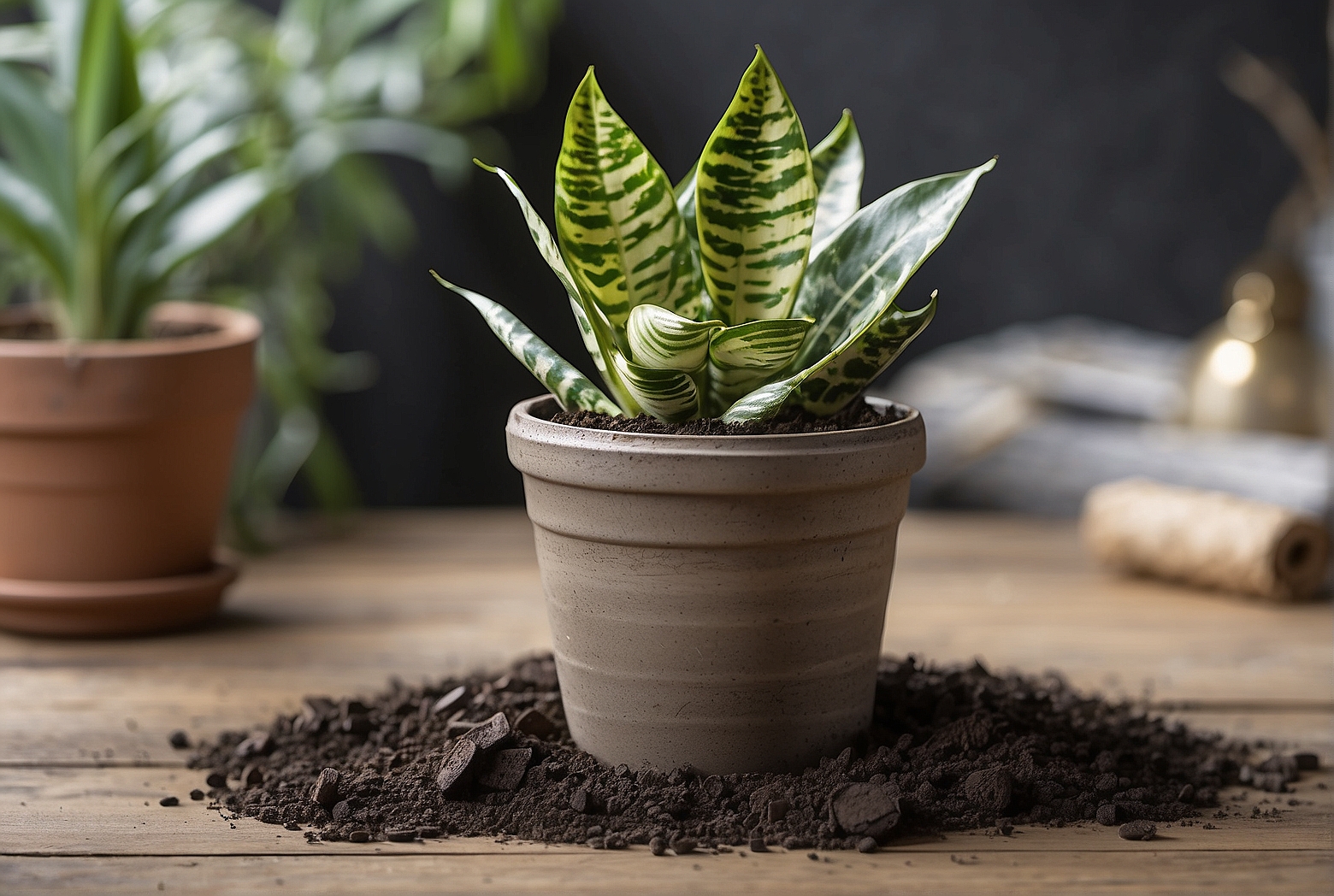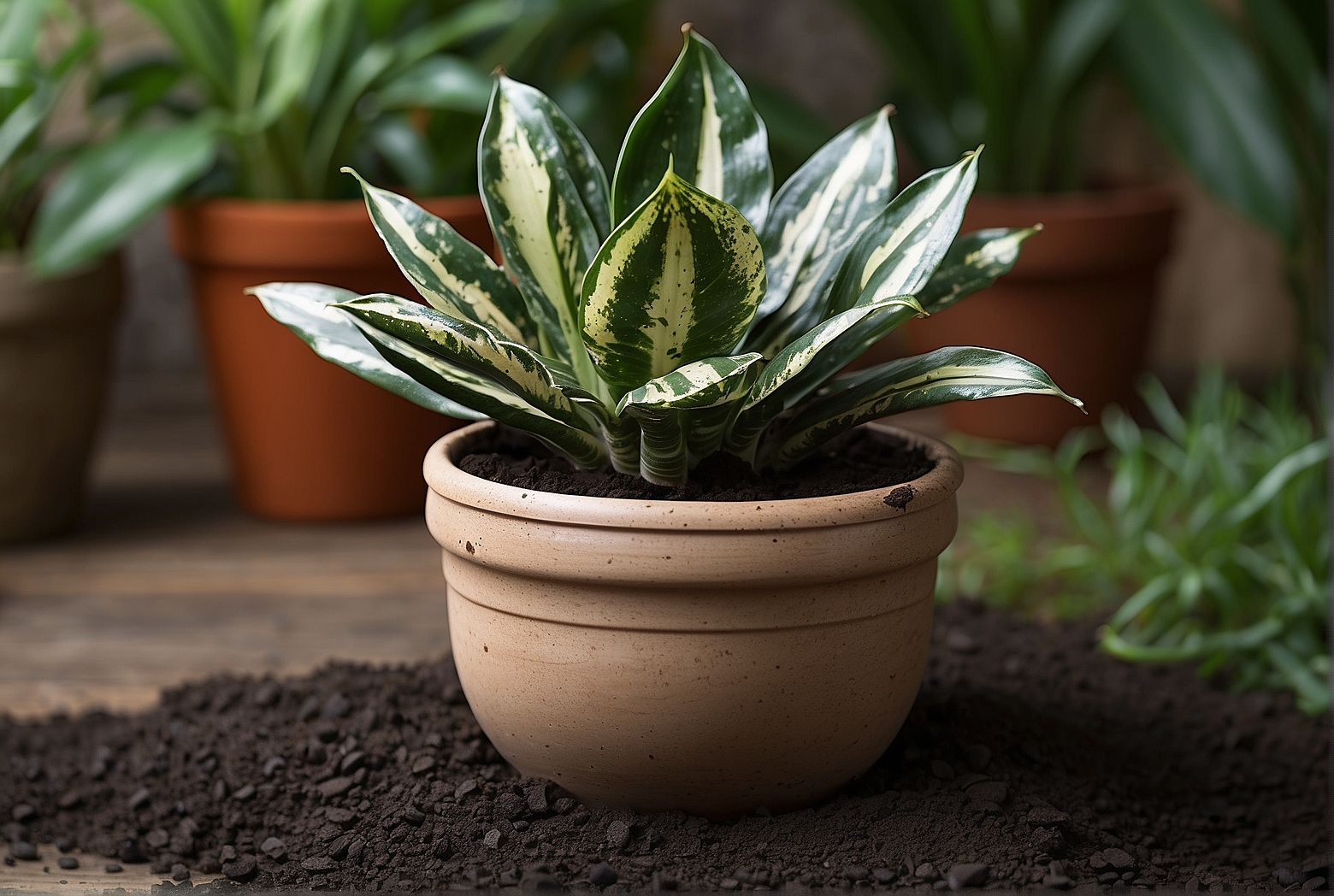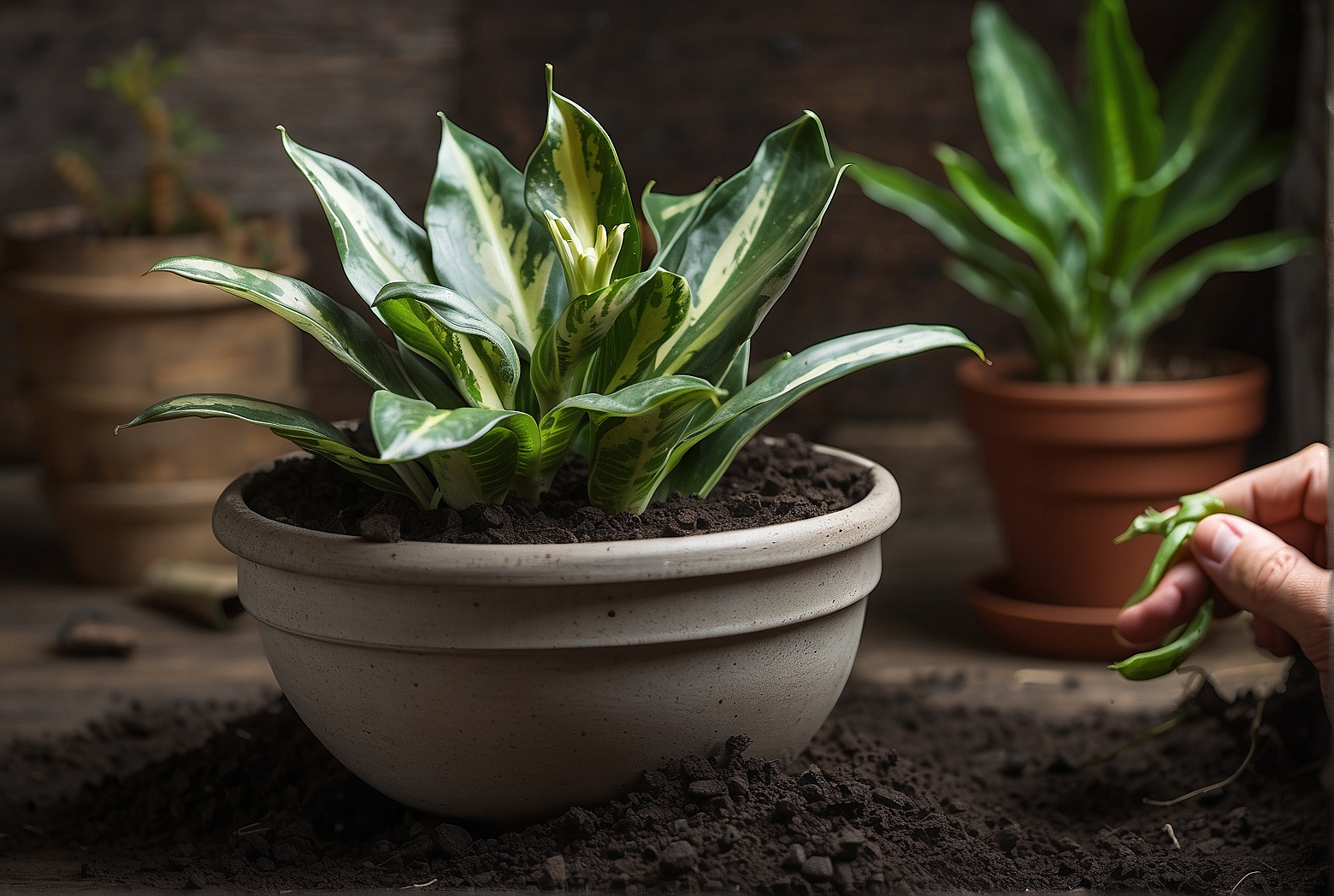Last Updated on April 17, 2024 by Tony Manhart
Are you a plant enthusiast looking for the perfect soil to cultivate your snake plants? Look no further, as we have the ultimate guide to help you make the best decision for your leafy friends. Snake plants, also known as Sansevieria, are revered for their ability to thrive in low light and dry conditions. In order to ensure their healthy growth, it is crucial to choose the right soil composition. By understanding the specific requirements of snake plants, you can create the optimal environment for them to flourish. So, let’s explore the best soil options that will provide your snake plants with the ideal growing conditions they need to thrive and stand tall in your home.
1. Overview of Snake Plants
– Introduction to snake plants
Snake plants, also known as Sansevieria, are popular indoor plants known for their unique appearance and low maintenance requirements. With their long, upright leaves that resemble snakes, these plants make a stylish addition to any home or office. Not only are snake plants aesthetically pleasing, but they also offer several benefits, including air purification and stress reduction.
– Importance of soil for snake plants
The type of soil you choose for your snake plant plays a critical role in its overall health and growth. The right soil provides essential nutrients, proper drainage, and a suitable environment for the roots to thrive. A well-chosen soil mix will help prevent issues such as root rot, waterlogging, and nutrient deficiencies, ensuring that your snake plant remains healthy and vibrant.
2. Characteristics of Ideal Snake Plant Soil
– Well-draining soil
Snake plants prefer soil that drains well. Excessive moisture can lead to root rot and other fungal diseases. Well-draining soil allows excess water to flow out of the pot, preventing waterlogging.

– Light and airy texture
Snake plants thrive in soil with a light and airy texture. This type of soil allows roots to penetrate easily and provides aeration, promoting healthy root growth.
– Neutral to slightly acidic pH level
Snake plants prefer soil with a neutral to slightly acidic pH level, ranging from 6.0 to 7.0. This pH range ensures optimal uptake of essential nutrients by the plant roots.
– Rich in organic matter
Snake plants benefit from soil that is rich in organic matter. Organic matter improves soil fertility, enhances water retention, and provides a steady release of nutrients for the plant.
3. Common Types of Soils for Snake Plants
– Cactus or succulent potting mix
A cactus or succulent potting mix is an excellent choice for snake plants. These mixes are designed to provide excellent drainage while still retaining enough moisture for the plant’s roots.

– African violet mix
An African violet mix can also be suitable for snake plants. They share similar soil requirements, and the mix ensures good drainage and moisture-retention qualities.
– Regular houseplant potting mix
If you don’t have access to specialized potting mixes, a regular houseplant potting mix can work well for snake plants. However, it’s essential to amend the mix with extra drainage materials to prevent waterlogging.
4. Making Your Own Snake Plant Soil Mix
– Choosing the base soil
To create your own snake plant soil mix, start with a base soil. A suitable base soil can be a combination of a commercial potting mix, such as peat-based mixes, and garden soil. This combination provides a good balance of moisture retention and drainage.
– Adding inorganic amendments
Next, add inorganic amendments such as perlite or vermiculite. These materials improve drainage and aeration, preventing the soil from becoming compacted and waterlogged.
– Incorporating organic materials
To enhance the soil’s fertility and water-holding capacity, incorporate organic materials such as compost or well-rotted manure. Organic matter improves the soil structure and provides essential nutrients over time.
– Balancing the pH level
To ensure the soil mix has a neutral to slightly acidic pH level, add lime if the soil is acidic or sulfur if the soil is alkaline. These amendments help adjust the pH to the ideal range for snake plants.
5. Best Soil Mix Ratios for Snake Plants
– Ideal proportion of base soil, inorganic amendments, and organic materials
A recommended ratio for a snake plant soil mix is 50% base soil, 25% inorganic amendments, and 25% organic materials. However, these ratios can be adjusted based on the specific needs of your snake plants and environmental conditions.
6. Factors to Consider When Choosing Snake Plant Soil
– Climate and environmental conditions
The climate and environmental conditions in your area play a significant role in selecting the right snake plant soil. If you live in a humid climate, a well-draining soil mix is crucial to prevent waterlogged roots. In drier climates, a soil mix with increased moisture retention may be beneficial.
– Watering habits and frequency
Consider your watering habits and frequency when choosing snake plant soil. If you tend to water your plants frequently, a soil mix with excellent drainage is essential. Conversely, if you are prone to watering infrequently, opt for a mix that retains moisture for longer periods.
– Pot size and drainage
The size of the pot and its drainage capabilities are important factors when selecting snake plant soil. Smaller pots require better drainage to prevent water accumulation, while larger pots can tolerate a slightly higher moisture retention capacity.
7. Using Soil Amendments for Snake Plants
– Perlite and vermiculite
Perlite and vermiculite are commonly used inorganic amendments that improve soil drainage and aeration. They help create air pockets in the soil, ensuring that the roots have access to oxygen.
– Sand and gravel
Sand and gravel can also be added to a snake plant soil mix to enhance drainage. These materials prevent excess water from sitting around the roots, minimizing the risk of root rot.
– Peat moss
Peat moss is an organic amendment that improves moisture retention and adds structure to the soil. It helps to retain moisture, ensuring that snake plants have access to water when needed.
– Coconut coir
Coconut coir is a sustainable alternative to peat moss. It provides similar benefits, improving moisture retention, and enhancing soil structure.
8. Tips for Planting Snake Plants in the Right Soil
– Selecting the appropriate container
Choose a pot or container with proper drainage holes to ensure proper water flow. Avoid containers without drainage holes, as this can lead to water accumulation and root rot.
– Preparing the potting mix
Prepare the snake plant soil mix by combining the selected base soil, inorganic amendments, and organic materials. Ensure that the mixture is well-incorporated and evenly distributed.
– Transplanting or repotting snake plants
When transplanting or repotting snake plants, carefully remove the plant from its current container, gently loosening the roots. Place the plant in the new container and fill it with the prepared soil mix, ensuring adequate space for root growth.
9. Maintaining Healthy Soil for Snake Plants
– Regular soil fertility management
To maintain healthy soil for snake plants, periodic soil fertility management is essential. This can be done by adding organic fertilizers or compost to provide a steady supply of nutrients to the soil.
– Checking soil moisture levels
Regularly check the moisture levels of the soil to ensure it is neither too dry nor too waterlogged. Stick your finger about an inch into the soil and if it feels dry, it’s time to water. If it feels moist, it means the soil retains enough moisture.
– Pruning and removing debris
Prune any dead or yellowing leaves to maintain the health of your snake plant. Additionally, remove any debris or fallen leaves from the soil surface to prevent pests and diseases.
– Preventing pests and diseases
Monitor your snake plant for signs of pests such as spider mites or mealybugs. If detected, treat them promptly with organic pest control methods to prevent infestations. Additionally, avoid overwatering or using contaminated tools to minimize the risk of soil-borne diseases.
10. Troubleshooting Soil Issues
– Signs of overwatering or underwatering
Overwatering can cause yellowing leaves, wilting, and root rot. Underwatering, on the other hand, can lead to dry and brittle leaves. Adjust your watering routine accordingly to avoid these issues.
– Nutrient deficiencies and excesses
Monitor your snake plant for signs of nutrient deficiencies or excesses, such as yellowing leaves, stunted growth, or leaf discoloration. Adjust your fertilization routine accordingly, ensuring that the soil has a proper balance of essential nutrients.
– Soil compaction and drainage problems
If you notice poor drainage or compacted soil, consider repotting your snake plant using a more suitable soil mix. Ensure that the pot has proper drainage holes and adjust watering practices to prevent waterlogging.
By following these guidelines and understanding the importance of soil for snake plants, you can create an ideal growing environment that promotes healthy growth and longevity for your beloved snake plants. Remember to regularly monitor the soil moisture levels, provide adequate sunlight, and maintain proper care practices to enjoy the beauty and benefits of these exceptional plants.
Tony Manhart is a passionate gardener who has been tending to gardens for over 20 years. He takes pride in creating beautiful outdoor spaces with plants, trees, and shrubs that can thrive in any environment. He loves to share his knowledge with others and has taught classes on gardening basics and advanced techniques. He is committed to sustainability, using natural and organic methods to create and maintain gardens. He also works with local organizations to create green spaces for communities. When he’s not gardening, Tony enjoys hiking, reading, and spending time with his family.


